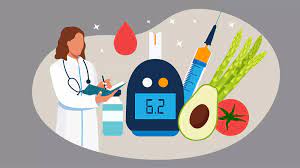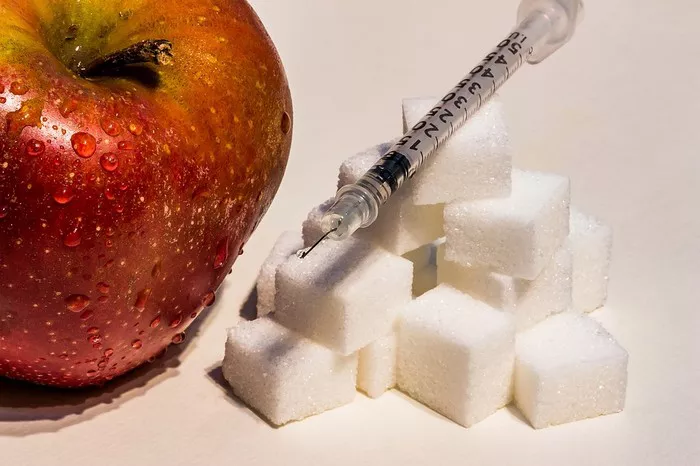Type 1 diabetes (T1D) is a chronic autoimmune condition that affects millions of people worldwide. It is characterized by the body’s inability to produce insulin due to the destruction of insulin-producing beta cells in the pancreas. Unlike type 2 diabetes, which is largely influenced by lifestyle factors such as diet and exercise, type 1 diabetes has a more complex and multifaceted etiology. In this article, we will delve into the various causes and contributing factors of type 1 diabetes, including genetic predisposition, environmental triggers, and the role of the immune system.
Genetic Predisposition
One of the primary factors in the development of type 1 diabetes is genetic predisposition. Several genes have been identified that increase the risk of developing the condition. The most significant genetic factors are found in the human leukocyte antigen (HLA) region on chromosome 6, which plays a crucial role in the immune system.
HLA Genes
The HLA region contains many genes involved in the regulation of the immune response. Certain HLA genotypes, such as HLA-DR3 and HLA-DR4, are strongly associated with an increased risk of developing type 1 diabetes. These genotypes are involved in the presentation of antigens to immune cells, and individuals with these genotypes are more likely to present self-antigens that trigger an autoimmune response against beta cells.
Non-HLA Genes
In addition to HLA genes, other non-HLA genes also contribute to the risk of developing type 1 diabetes. Some of these include:
- Insulin gene (INS): Variations in the INS gene, which encodes the precursor of insulin, can influence the immune system’s recognition of insulin as a self or non-self antigen.
- PTPN22: This gene encodes a protein tyrosine phosphatase that is involved in the regulation of immune responses. Variants in PTPN22 are associated with multiple autoimmune diseases, including type 1 diabetes.
- CTLA-4: This gene encodes a protein that downregulates immune responses. Variants in CTLA-4 have been linked to an increased risk of type 1 diabetes and other autoimmune diseases.
Environmental Triggers
While genetic factors are crucial, they alone do not account for the development of type 1 diabetes. Environmental triggers are also essential in initiating the autoimmune process. These triggers can include viral infections, dietary factors, and other environmental influences.
Viral Infections
Several viral infections have been implicated in the development of type 1 diabetes. Viruses such as enteroviruses, coxsackievirus B, and rotavirus have been studied extensively for their potential role in triggering the autoimmune response that leads to beta cell destruction. The proposed mechanisms by which viruses contribute to type 1 diabetes include:
- Molecular mimicry: Viral proteins may share structural similarities with beta cell antigens, leading the immune system to mistakenly target beta cells while attacking the virus.
- Direct beta cell infection: Some viruses can directly infect beta cells, causing cell damage and inflammation that triggers an immune response.
- Bystander activation: Viral infections can activate the immune system in a non-specific manner, leading to the activation of autoreactive T cells that target beta cells.
Dietary Factors
Dietary factors, particularly during infancy and early childhood, have been studied for their potential role in the development of type 1 diabetes. Some of the dietary factors that have been investigated include:
- Cow’s milk proteins: Early exposure to cow’s milk proteins has been suggested as a possible trigger for type 1 diabetes, although the evidence is not conclusive. Some studies have found an association between early cow’s milk exposure and an increased risk of type 1 diabetes, while others have not.
- Gluten: Some research has suggested that early exposure to gluten may increase the risk of type 1 diabetes, particularly in genetically predisposed individuals. However, more research is needed to establish a clear link.
- Vitamin D: Vitamin D deficiency has been associated with an increased risk of type 1 diabetes. Vitamin D plays a role in immune regulation, and insufficient levels during critical periods of immune system development may contribute to the development of autoimmune diseases.
Other Environmental Influences
Other environmental factors that have been studied for their potential role in the development of type 1 diabetes include:
- Geographic location: The incidence of type 1 diabetes varies significantly by geographic location, with higher rates observed in northern European countries compared to southern regions. This variation suggests that environmental factors related to latitude, such as sunlight exposure and vitamin D levels, may play a role.
- Seasonal variation: Type 1 diabetes diagnosis rates often exhibit seasonal patterns, with higher rates observed in autumn and winter. This pattern may be related to seasonal variations in viral infections, sunlight exposure, and vitamin D levels.
Immune System Dysfunction
The hallmark of type 1 diabetes is the autoimmune destruction of beta cells in the pancreas. This process involves a complex interplay between genetic predisposition, environmental triggers, and immune system dysfunction.
Autoimmunity
Autoimmunity occurs when the immune system mistakenly targets and attacks the body’s own tissues. In type 1 diabetes, the immune system targets the insulin-producing beta cells in the pancreas. The autoimmune response involves both the innate and adaptive immune systems, with a particular emphasis on T cells.
- CD4+ T cells: These helper T cells are involved in orchestrating the immune response by activating other immune cells. In type 1 diabetes, autoreactive CD4+ T cells recognize beta cell antigens and initiate the autoimmune attack.
- CD8+ T cells: These cytotoxic T cells directly target and destroy beta cells. Autoreactive CD8+ T cells play a central role in the beta cell destruction seen in type 1 diabetes.
- B cells and autoantibodies: B cells produce antibodies that target specific antigens. In type 1 diabetes, autoantibodies against beta cell antigens, such as insulin, glutamic acid decarboxylase (GAD), and insulinoma-associated antigen-2 (IA-2), are often present and serve as markers of the autoimmune process.
Regulatory T Cells (Tregs)
Regulatory T cells (Tregs) play a crucial role in maintaining immune tolerance and preventing autoimmune diseases. Tregs help suppress autoreactive immune responses and promote immune homeostasis. In individuals with type 1 diabetes, the function and number of Tregs may be impaired, leading to a loss of immune tolerance and the development of autoimmunity.
Stages of Type 1 Diabetes Development
The development of type 1 diabetes typically follows a progressive course that can be divided into several stages:
- Genetic susceptibility: Individuals with a genetic predisposition to type 1 diabetes are at increased risk of developing the condition.
- Environmental trigger: An environmental factor, such as a viral infection or dietary component, triggers the autoimmune response.
- Autoimmunity: The immune system begins to target beta cells, leading to the production of autoantibodies and the activation of autoreactive T cells.
- Beta cell dysfunction: As the autoimmune attack progresses, beta cell function declines, leading to impaired insulin production.
- Clinical diabetes: When a significant proportion of beta cells are destroyed, insulin production becomes insufficient to regulate blood glucose levels, leading to the onset of clinical type 1 diabetes.
Prevention and Intervention Strategies
Given the complex and multifactorial nature of type 1 diabetes, preventing or delaying the onset of the condition presents significant challenges. However, several strategies are being investigated to address the various aspects of its development:
Genetic Screening and Early Detection
Identifying individuals at high risk of developing type 1 diabetes through genetic screening and monitoring for the presence of autoantibodies can enable early detection and intervention. Research is ongoing to determine the best methods for screening and monitoring at-risk individuals.
Immunomodulation
Interventions aimed at modulating the immune response to prevent or halt the autoimmune attack on beta cells are an area of active research. Some approaches being investigated include:
- Immune tolerance induction: Strategies to induce immune tolerance to beta cell antigens, such as oral insulin or peptide vaccines, aim to prevent the autoimmune response.
- Immune suppression: Immunosuppressive drugs, such as cyclosporine or anti-CD3 antibodies, have been studied for their potential to prevent or delay the onset of type 1 diabetes by suppressing the immune response.
Environmental and Lifestyle Interventions
Addressing potential environmental triggers and lifestyle factors may also play a role in preventing type 1 diabetes. Some areas of focus include:
- Viral infection prevention: Strategies to prevent or reduce the impact of viral infections, such as vaccinations or antiviral medications, are being explored.
- Dietary modifications: Research is ongoing to determine whether dietary interventions, such as delayed introduction of certain foods or supplementation with vitamins like vitamin D, can reduce the risk of type 1 diabetes.
Beta Cell Preservation and Replacement
Efforts to preserve remaining beta cells and restore beta cell function are critical for preventing the progression of type 1 diabetes. Some approaches being investigated include:
- Beta cell preservation: Therapies aimed at protecting beta cells from autoimmune attack, such as anti-inflammatory agents or cytokine inhibitors, are being studied.
- Beta cell replacement: Advances in stem cell research and islet transplantation offer the potential for restoring beta cell function in individuals with type 1 diabetes. Researchers are exploring methods to generate insulin-producing beta cells from stem cells and improve the success of islet transplantation.
See also: What’s Late-Onset Type 1 Diabetes
Conclusion
Type 1 diabetes is a complex and multifactorial disease with a combination of genetic, environmental, and immunological factors contributing to its development. Understanding the causes of type 1 diabetes is essential for developing effective prevention and intervention strategies. While significant progress has been made in identifying genetic predispositions and environmental triggers, much remains to be learned about the precise mechanisms underlying the autoimmune destruction of beta cells. Ongoing research and advances in immunology, genetics, and stem cell biology hold promise for improving our understanding of type 1 diabetes and ultimately finding ways to prevent, delay, or cure this challenging condition.
Related topics:
What’s Clinical Features of Diabetes Mellitus



























